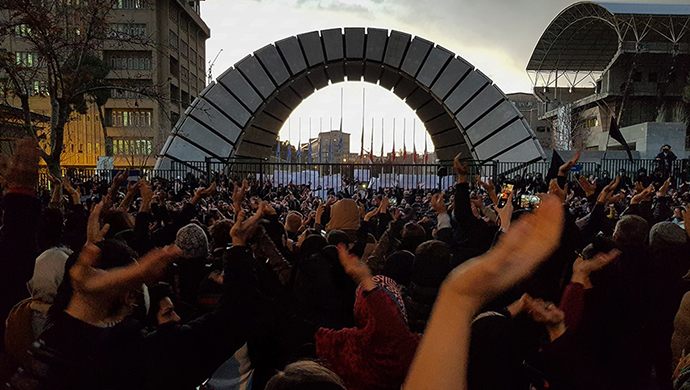
Major protests against the mullahs’ regime have been escalating across Iran in the past few years.
Iran has experienced numerous large-scale uprisings and countless local protests in numerous provinces since the end of 2017, involving people from a variety of demographics and professional affiliations. A recent study by the Supreme National Defense University (SNDU) on this ongoing phenomenon found that “three out of four Iranians participate in protests” and that a similar proportion can be anticipated to stay involved if another nationwide uprising occurs soon.
In November 2019, the largest of the previous uprisings, which included nearly 200 cities and towns, was characterized by slogans that had gained notoriety over the previous two years as expressions of the widespread demand for regime change. The People’s Mojahedin of Iran (PMOI/MEK)), the nation’s leading pro-democracy opposition group, which the regime’s Supreme Leader Ali Khamenei had personally held accountable for another nationwide uprising that started in December 2017, promoted those slogans in large part through the work of “Resistance Units” affiliated with the group.
MEK supporters started a serious campaign at the beginning of this year that has thus far involved censoring state media broadcast signals and taking down official websites. Crossed-out images of the supreme leader were substituted for the regime’s content in both cases, along with the now-famous slogan “death to the dictator” and quotes from Massoud Rajavi and Maryam Rajavi, the president-elect and vice president, respectively, of the National Council of Resistance of Iran (NCRI).
In the midst of these activities, the Resistance Units have continued their well-honed on-the-ground operations, posting images of Massoud and Maryam Rajavi in public places alongside messages urging people to fight back against oppressive authorities. These operations have also escalated in some ways, as evidenced by reports of MEK supporters seizing control of public address systems and issuing calls for more uprisings.
According to the recent SNDU study, the IRGC and other state-repressive institutions are failing to control public outrage. As far as the report’s authors, who were working on behalf of the General Staff of the Armed Forces, suggested alternative interventions to stop future uprisings by actually resolving underlying grievances. For instance, the study recommended that authorities begin “reforming political governance” and giving “social justice” a high priority, as well as addressing economic inequalities and a lack of social mobility, which are significant causes of social unrest.
The study also warned that in the absence of constructive interventions, the regime will have to contend with the growing possibility that “Iranian society is on the verge of political collapse.”
To avoid a collapse, the regime has become even more hardline in the face of previous uprisings. The appointment of Ebrahim Raisi as the new president of the regime in June 2021 is one of the most obvious examples of this trend.
Raisi participated actively in the 1988 massacre of political prisoners, and in 2019, he oversaw the judiciary’s repression of the November uprising. Raisi’s first year in office has largely lived up to that expectation because Khamenei’s endorsement of him was widely interpreted as a call for more of the same repression.
These trends have so far been ineffective in silencing outspoken public dissent. Even though the SNDU study and numerous reports in state media show that many people are aware of how explosive Iranian society is, the regime is unable to alter its course

